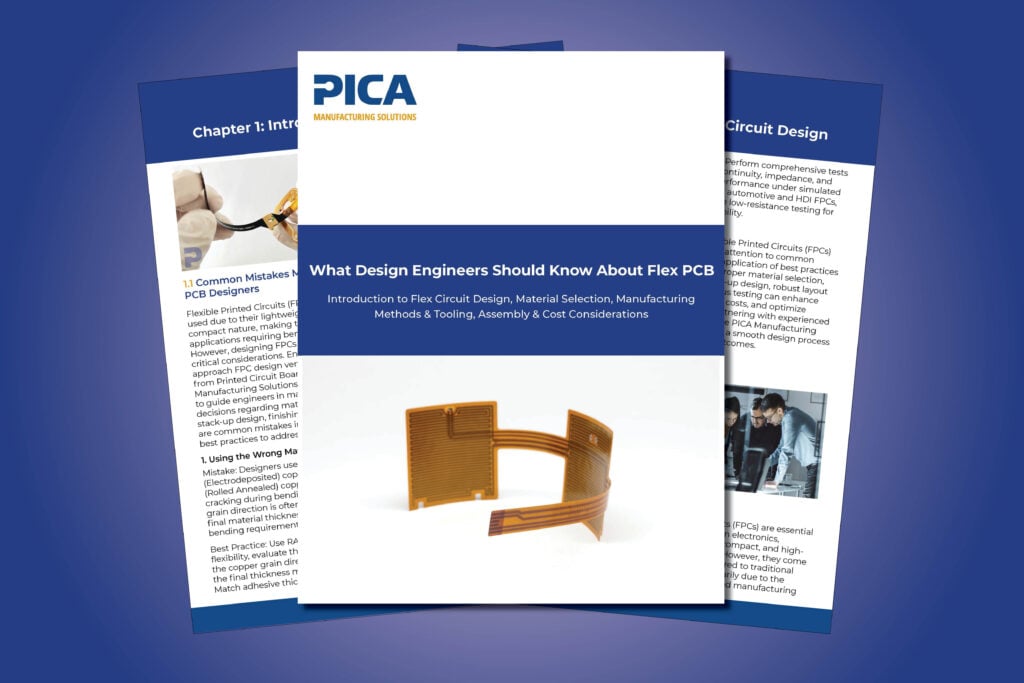Download What Design Engineers Should Know About Flex PCB eBook.
What Design Engineers Should Know About Flex PCB
The eBook provides a comprehensive overview of Flex PCB design, emphasizing the unique considerations compared to traditional rigid PCBs. Engineers must prioritize proper material selection, especially using RA copper for improved bend reliability, and avoid common mistakes like asymmetric stack-ups or incorrect adhesive pairing. Flex Adhesives such as modified acrylics, epoxies, and pressure-sensitive adhesives play a critical role in maintaining mechanical integrity, thermal stability, and electrical insulation. Proper use of Flex PCB stiffeners—including materials like FR4, polyimide, or metal—is vital for reinforcing areas around connectors and components, ensuring mechanical support without sacrificing flexibility. These design strategies are essential to minimize failures from mechanical stress, warping, or thermal cycling. The guide also contrasts PCBA vs. FPCBA, highlighting that while PCBAs are more cost-effective and suitable for static installations, FPCBAs offer unmatched flexibility and are ideal for compact, dynamic environments like wearables and mobile devices. Manufacturing differences include the need for individual carriers in FPCBA to support delicate substrates during component placement. Additionally, the document explores extra-long flexible circuits, detailing manufacturing via panel-based or roll-to-roll methods. Roll-to-roll enables high-throughput production with reduced material waste, whereas panel-based processing is preferred for multilayer, high-precision designs. These innovations support the growing demand for flexible, lightweight, and extended-length electronics across industries such as medical, automotive, and consumer tech.

